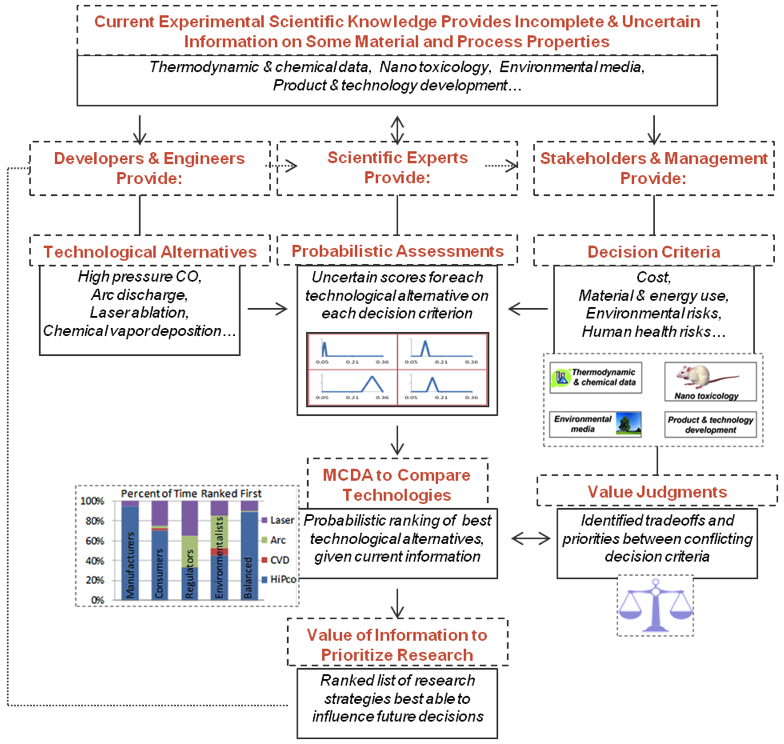Decision Analysis
Perceived risks associated with the manufacturing, use, and disposal of novel technologies (e.g., nanomaterials) often delay or even preclude their use to solve societal needs. We develop adaptive methods and models to evaluate and prioritize relevant risks and implement decision analysis techniques to compare and guide selection of appropriate courses of action and risk management alternatives.

Decision analytical tools add valuable structure to otherwise ad hoc decision processes. The decision-making process involves various stakeholders who place different weights on different decision criteria. Multi-Criteria Decision Analysis integrates this information by comparing the technologies to determine which performs best on each criterion, and computes a total performance score across all criteria for each technology for each evaluation perspective.
Capabilities
- Environmental Risk Assessment and Management
- Visualization of risks, uncertainty and tradeoffs
- Risk-based Decision Analysis
- Multi-Criteria Decision Analysis for formulation or technology prioritization
- Life cycle assessment and Life Cycle costing
- Value of Information analysis
- Weight of evidence evaluation
- Strategy development and justification
- Risk-based Acquisition support
- Portfolio analysis
- Stakeholder engagement and risk communication
Education
- M.S. Environmental Engineering; Tufts University
- B.S. Economics; Boston College
Research Interests
- Water resources, decision analysis, risk and resilience, emergency management
Jeff Cegan
Research Environmental Engineer
Education
- PostDoc., Harvard University, Cambridge, MA, 1998, Risk Assessment and Biostatistics
- Ph.D., University of Pittsburgh, Pittsburgh, PA, 1995, Environmental and Occupational Health
- M.S., St. Petersburg Technical University, 1990, Physics and Mathematics
Research Interests
- Nanoenabled product prioritiozation for testing by the Consumer Product Safety Commission
- Multi-criteria Decision Analysis framework for risk-based prioritization of nanoenabled materials and technologies
- sustainabile nanotechnology: integration or Risk Assessment, Life Cycle Assessment and Decision Analysis